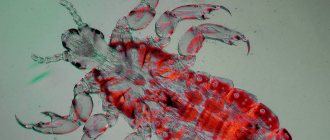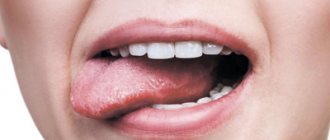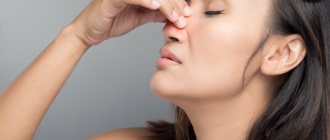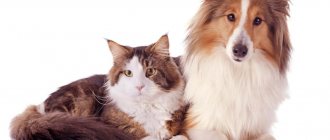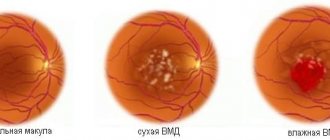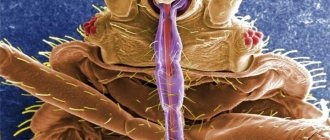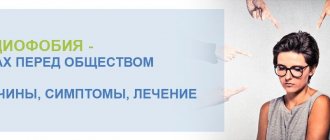Pediculosis pubis (pubic lice) is a disease caused by the parasite Pthirius pubis, which infects human pubic hair. In addition to the genital area, it can affect other areas covered with hair. It is estimated that this disease affects about 2% of the world's population.
The pubic louse is a small insect about the size of a pin. It is from 1 to 3 mm long and has 6 legs. It is characteristic that her hind legs are thicker than her front legs with large claws. The louse cannot jump and feeds exclusively on blood. Humans are the only known hosts of this parasite. Adults are affected more often than children.
Features of pubic lice
These are small insects - up to 3 mm. Females are noticeably larger than males. They have a flattened oval body that is light brown in color. Three pairs of legs are spread wide, so it seems that the width of the insect is greater than its length. The legs are long and pincer-shaped. The structure allows them to move along triangular hair. They cannot attach to the round hairs that grow on the head, so they do not live on the head.
Like other types of lice, pubic lice go through several stages of development:
- nits – white eggs, inside of which larvae develop; this stage takes up to a week;
- nymphs of stages 1, 2 and 3 – in 15–17 days the parasite goes through three moults and becomes sexually mature;
- adults.
Read more in the article “Incubation period of lice and nits”
Pubic louse lives up to 30 days. During its life it lays about 50 eggs.
Without food, the parasite lives for a day. If unfavorable conditions occur, the pubic louse can fall into a state of suspended animation and spend several months in it. Pubic lice can survive up to two days in water. They can withstand loads of up to 1 kg. For example, on the beach, in the sand, they can exist for several days.
Where can you find pubic lice?
As mentioned above, pubic lice live on the hairy parts of the human body, but do not affect all the hair. They are attracted to areas with apocrine glands that secrete a special secretion:
- pubis;
- crotch;
- anus;
- scrotum;
- armpits.
The affected areas are always covered with hair. These parasites do not live on smooth skin. The disease occurs in both men and women. Children can also become infected with it if they have hair on their genitals.
How can you become infected with phthiriasis?
There are several ways the disease can spread. The most susceptible to this are women and men who lead an antisocial lifestyle and promiscuous sex life, as well as those who do not maintain personal hygiene.
But you can also catch pubic lice through:
- clothes of a sick person;
- towels and bed linen;
- public toilets;
- beaches, solariums;
- baths, saunas, swimming pools, etc.
Even with careful hygiene, no one is protected from infection, so it is important to be careful when visiting public places and communicating with potential carriers of parasites.
Symptoms of phthiriasis
Pubic lice can be seen without the use of special equipment. They are small, but move quite quickly. Nits are very small and are attached at the very base of the hairs, so they can be very difficult to notice.
In addition to a visual examination, you can find out about the presence of phthiriasis by the following symptoms:
- constant itching - it occurs due to the fact that when bitten, the parasite injects a substance under the skin that is an active irritant;
- small blue dots at the bite sites are traces of an injected substance that prevents blood clotting;
- Due to unbearable itching, a person scratches the skin, skin damage appears, including dermatitis and eczema.
When affected by phthiriasis, a person becomes restless and irritable.
Sometimes symptoms appear even with a small number of parasites on the body. They may not be seen due to the fact that they are hidden in matted and thick curls of hair. In this case, you should consult a doctor to confirm the diagnosis. The specialist uses the following methods for detecting parasites:
- examination with a Wood's lamp - it allows you to see live nits, which in its fluorescent light look white, and dead ones remain gray;
- examination of the affected areas at multiple magnification using a videodermatoscope;
- Examination of the eyes with a slit lamp to detect nits on the eyelashes.
Diagnostics in a medical facility
The doctor can make a more accurate diagnosis and prescribe the correct treatment and special remedies. The following examination methods are used:
- A Wood's lamp or slit lamp is used to inspect for nits. Living insects glow whitish under the rays, while dead insects have gray shells.
- Videodermatoscopy is performed using a special video camera. This produces images of all suspicious objects.
The doctor will tell you how to remove parasites and what products to use.
Why is phthiriasis dangerous?
Skin damaged by scratching is favorable conditions for infections to enter the body. The scratched areas become infected, ulcers and boils appear on them. If left untreated, the infection goes deeper into the lymph system. This can lead to systemic diseases and blood poisoning. Pubic lice, with their saliva, transmit infectious diseases, such as typhoid, from person to person.
Many patients experience allergic reactions. Also, phthiriasis is almost always accompanied by sexually transmitted diseases. It could be chlamydia, gonorrhea, syphilis. Pubic lice, passing from person to person, carry the causative agents of these diseases in their saliva. This is precisely what causes the most danger of infection with lice pubis.
When a person is very seriously affected and there are a large number of lice, they do not have enough space to live in the groin and armpits. In this case, they can live on eyebrows and eyelashes. When these areas are affected, conjunctivitis, blepharitis and other eye diseases develop.
FAQ(Frequently Asked Questions)
Is dermatol ointment used to treat lice pubis?
The list of indications for the use of dermatol ointment according to the instructions does not include pediculosis, but people know its use to combat it. Whether the drug will be effective in a particular case must be decided by the doctor.
Pediculosis pubis is a disease that causes serious and physical discomfort. But modern medicines make it possible to get rid of it in a short time and prevent its recurrence. If unpleasant symptoms appear, you should consult your doctor.
- about the author
- VK profile
Ways to combat pubic lice
Getting rid of pubic lice is much easier than getting rid of head or body lice. The most effective way is mechanical. That is, you just need to remove all hair from the affected area so that parasites do not have the opportunity to live on the body. They cannot move on smooth skin. The “fashion” for hair removal in intimate areas over the past few years has significantly reduced the incidence of this disease.
If you are infested with pubic lice, you need to shave or otherwise remove the hair on the infected area. It is better to remove hair from the entire body so as not to leave any opportunity for parasites to survive unfavorable conditions nearby. After hair removal, it is advisable to apply pediculicide to the affected area to destroy nits, which, due to their small size, can be hidden in the skin flakes.
If for some reason it is impossible to use the mechanical method, then you can use folk remedies or special preparations that kill lice and nits.
Pediculosis
1. Pediculosis
1.1 Etiology of pediculosis
Pediculosis (Lice) is a parasitic skin disease caused by lice. Pediculosis often develops under unfavorable hygienic conditions, uncleanliness, and in places where large numbers of people live densely.
Lice (Anoplura) are insects that feed on blood and spend their entire lives on the human body. There are:
- Head lice;
- Body lice;
- Pubic lice.
Head lice (Pediculus capitis) parasitize the scalp and lay grayish-white eggs (nits), which are tightly attached to the hair with a chitinous substance.
Body lice (Pediculus vestimenti) settle in bed and underwear, underwear and outerwear, from where they get on the skin.
Pubic lice (Pediculus pubis), or lice, unlike head and body lice, are held on the hair by only three legs of one half of the body and move along the hair in the same way. They live on the hair of the pubic region, lower abdomen, thighs, armpits, chest, perineum and anus, since in these areas there are a large number of apocrine sweat glands, to which the sense of smell of pubic lice is specifically oriented. Nits may also be present on the hair of adult individuals at the same time. Rarely affecting children, pubic lice settle in the eyebrows, eyelashes and scalp.
Getting onto the scalp and clinging to the hair with the help of mites located on the legs, the louse thrusts its mouthparts into the skin and sucks blood from the capillaries. Along with the bite, under the influence of skin irritation with the secretion of the salivary glands, itchy spots and nodules appear (characteristic of head and body lice). As itching increases, scratching appears, as a result of which inflammation intensifies and spreads, erosions, crusts, peeling are formed, and then vesicles, weeping - an eczematous process develops, which can be complicated by pyoderma. The appearance of maculae coeruleae in pediculosis pubis is associated either with the appearance of small hemorrhages when lice suck blood, or with the deposition of secretion from the salivary glands of lice.
1.2 Pediculosis clinic
The incubation period from the moment of infection to the onset of symptoms can last up to 30 days or more.
- Head lice are more common in girls and women. The most common localization of lice and nits is the temporal and occipital regions. In advanced cases, insects appear on the eyebrows, eyelashes, and in men - in the beard and mustache. Severe itching, scratching, and diffuse skin irritation are noted. Eczematization may occur - the appearance of blisters and weeping. The thick, abundant exudate that is released shrinks into crusts, sticking the hair together into thick tufts, up to the formation of felt-like cocoons. Patients have an unpleasant odor. The disease is often complicated by pyoderma, which can spread to the ears, neck, forehead, eyebrows; at the same time, regional lymph nodes become inflamed and enlarged.
- Body lice most often affects adults, less often children.
- Lice parasitize in places where the folds and seams of dresses and clothing come into contact with the body (armpits, inguinal-femoral folds, lower back, abdomen, upper back). The disease is accompanied by itching and scratching. Complications associated with pustular flora (folliculitis, boils, ecthyma) are possible. With a long course of the disease, areas of thickening of the skin with linear scratching and peeling develop in the affected areas, and the skin acquires a dirty gray, grayish-brown tint. After recovery, hyperpigmented spots remain.
- Pediculosis pubis affects mainly adults through sexual intercourse, less often through underwear or bed linen. This disease is more common in women aged 15-19 years. After 20 years, its frequency levels off in men and women. Pediculosis pubis is accompanied by less severe itching than other forms of pediculosis, so scratching with its usual consequences (secondary infection, eczematization) is less common. The process is usually limited to the pubis, but the thighs and trunk may be involved, especially in people with highly developed hair. When eyelashes are damaged, blepharitis develops. Pediculosis pubis is characterized by the appearance of bluish or gray spots, up to 1 cm in diameter, which quickly disappear. They are especially pronounced on the abdomen, chest, side surface of the torso and thighs.
1.3 Diagnosis of pediculosis
If any itchy rash is detected on the scalp, head lice should be ruled out. All persons seeking medical care and undergoing routine medical examinations are subject to examination for pediculosis.
The diagnosis of pediculosis is made on the basis of the clinical picture - a visual examination and the results of a parasitological study.
By visual inspection with the naked eye or with a magnifying glass, adult lice can be seen. Insects are better distinguishable after they have drunk blood. With lice pubis, lice appear as gray-brown dots located at the root of the hair. Lice are absolutely motionless, but when you try to tear them off, they show signs of life and cling even more actively to the hair, from which they tear themselves off only with great difficulty. To separate a louse, you need to pull it with tweezers along the entire hair. More often, nits are found that are firmly attached to the hair. Nits are sometimes confused with kinks or knots in the hair, as well as flakes in seborrheic dermatitis and dandruff. To confirm the diagnosis, microscopic examination of the hair is necessary.
to differentiate pediculosis from:
- Pyoderma;
- Microbial eczema;
- Neurodermatitis;
- Seborrheic dermatitis;
- Psoriasis;
- Contact dermatitis.
2. Measures to combat head lice. Treatment and prevention of pediculosis
2.1 Measures to combat head lice
If you suspect body lice, you should contact a medical institution (clinic, skin and venereal disease dispensary), whose medical worker will submit an application to the Disinfection Station of the administrative district to carry out the treatment of things and apartments, or you yourself should contact the Disinfection Station at your place of residence.
In case of head lice, treatment can be carried out on your own, for which you need to buy an anti-pediculosis agent at a pharmacy or specialized store and treat the head strictly according to the instructions. After processing and washing your hair, for better removal (peel-off) of nits, you should moisten your hair with 9% table vinegar diluted in half with water and comb it thoroughly with a fine comb. If necessary, the treatment is repeated every 7 days until insects and nits are completely destroyed.
In the presence of skin diseases, allergies and in children under 5 years of age, when the use of anti-pediculosis drugs is not advisable, mechanical combing of lice and nits is carried out with a fine comb. For children, a haircut is possible.
Simultaneously with the treatment for pediculosis, underwear and bed linen are changed, followed by washing, linen and outerwear are ironed with steaming.
If you suspect pubic pediculosis, you should contact the skin and venereal disease clinic at your place of residence to treat and treat the consequences.
The first option is self-processing.
Buy any product for treating pediculosis (lice) at the pharmacy.
Treat the child’s scalp with the product strictly in accordance with the attached instructions.
Wash your baby using baby soap or shampoo. For boys, a haircut is possible.
Remove dead insects and nits mechanically (pick with your hands or comb out with a fine-toothed comb). To remove nits, you need to wet strands of hair in a solution prepared from equal amounts of water and 9% table vinegar. Rinse your hair with warm water.
Put on clean underwear and clothes for your child.
Wash bedding and baby's clothes separately from other things, iron them using steam.
Inspect and, if necessary, treat all family members. Don't forget about yourself.
Report the situation to the doctor (nurse) of the children's institution that your child visits, so that a set of anti-pediculosis measures can be carried out.
Repeat examinations of the child and all family members after 7, 14, 21 days and, if necessary, carry out repeated treatments until insects and nits are completely eradicated.
The second option is processing in a sanitary checkpoint.
If you cannot carry out the treatment yourself or would like to receive professional help, then contact any sanitary checkpoint of the city disinfection center, and they will definitely help you. Processing in sanitary checkpoints is carried out free of charge.
In advance, by phone, specify the route to the sanitary checkpoint and the processing time convenient for you.
The third option is an independent method of machining.
It is carried out in cases where your child has skin or allergic diseases and if the child is under 5 years of age.
Sequencing:
- Comb out live insects with a fine-toothed comb, preferably in the bathroom, and rinse with hot water.
- Treat strands of hair carefully, without touching the child’s scalp, with 9% table vinegar diluted in half with water and remove nits from the hair with your hands or a comb. You can put cotton wool soaked in the same solution on the comb to improve the peeling off of nits.
- Wash the child's head and body with baby soap or shampoo.4. Wash your child's underwear, bed linen and things separately from other things, iron with a steam iron.
- Inspect and if insects are identified, treat all family members. To treat adult family members, use anti-pediculosis agents, which can be purchased at the pharmacy chain.
- Repeat examinations of the child and all family members after 7, 14, 21 days and carry out repeated treatments if necessary. If insects and nits are detected, carry out repeated treatments until they are completely exterminated.
2.2 Treatment of lice
To treat head lice, a comprehensive approach is required that will destroy both nits (eggs) and adult lice. Control methods differ for different types of lice.
1. Pubic lice:
To get rid of pubic lice, you can use the following method:
- Shave all hair where possible (on the pubis, armpits), to avoid infection of the bite site, disinfect with 10% white mercury ointment;
- Remove parasites from eyelashes and eyebrows using your nails.
2. Body lice:
Linen and clothing should be boiled or treated with steam, because... A simple low-temperature wash may not be enough. After high-temperature treatment, you should hang the laundry for a week, preferably in the sun in a ventilated place.
Another method involves treatment with an insecticidal preparation, followed by washing and airing in the sun for a week.
Disinfection of clothes and linen in a steam-formalin chamber is considered the most effective. This method is more effective because... combines high temperature and chemical processing.
When processing clothing, be aware that nits can be deposited in thick folds and seams of clothing, where they can withstand insufficient heat treatment.
Considering the special epidemiological significance of body lice and the possibility of fixing nits not only on the villi of clothing, but also on the vellus hairs of the human skin, with a widespread process, it is necessary to resolve the issue not only of disinsection of clothing, but also of treating the patient with one of the pediculocidal drugs.
3. Head Lice:
- The best way: comb out adult lice, then use a hot hairdryer for 3-4 days as itching appears. until you have dried all the newly hatched ones.
- Pharmacies now sell a wide range of anti-pediculosis products - shampoos, ointments, aerosols. The most well-known pediculocides (drugs that kill lice and their nits):
- Hellebore water;
- Lauri;
- Medifox;
- Pair plus;
- Nittifor;
- Nix;
- Veda-2;
- Serummeric ointment;
- 20% water-soap suspension of benzyl benzoate (a drug for the treatment of scabies, previously also used against lice, but now this is not recommended);
- 5% boric ointment;
- Butadione (ointment for healing wounds from bites).
Of the listed drugs, some do not have an ovicidal (nit-killing) effect. Even in the presence of an ovocidal effect, some nits, as a rule, survive, so it is important to remove them mechanically. Studies in Western Europe, Canada and the USA, Israel, Argentina, and Russia have found that head lice become resistant to most anti-pediculosis drugs, which complicates treatment with drugs such as permethrin and phenothrin. Therefore, natural remedies for lice and nits have now appeared all over the world. In Russia, this product is “ROSH TOV Double Impact” (contains extracts of plants and oils that are not pesticides and are approved for use in cosmetics. Natural preparations do not act like chemical ones. The respiratory system of lice consists of respiratory tubes or tracheas, branching along throughout the body and communicating with the spiracles located on the sides of the abdomen and chest. Molecules of essential oils penetrate the respiratory system and clog the respiratory openings of lice. Lice die from suffocation and dehydration. Due to the physical mechanism of action, as well as the fact that polysaccharides in the oils and extracts are also included in the structure of insects, making it difficult for lice to develop resistance to the ingredients of such drugs) When using any anti-lice products, you should follow the instructions as closely as possible, since these drugs are very toxic. Many of them are contraindicated for pregnant and lactating women and small children.
There are also numerous folk recipes for getting rid of lice. They are usually less effective than pharmaceutical products and are not necessarily less toxic. You should not use them just because you are ashamed to buy lice products at the pharmacy. Here are some of them:
- 50% sunflower oil + 50% kerosene;
- 50% laundry soap + 50% kerosene, dilute the resulting concentrated solution with water before applying to hair 1: 10 (100 ml of solution per 1 liter of water);
- Cranberry juice (effective against nits, since its acidic environment dissolves the outer shell of the egg);
- Vinegar (9% table vinegar is diluted with water twice to obtain an acid concentration of 4.5%);
- Dust soap;
- Tar soap (works due to the high concentration of alkali);
- Dichlorvos;
- Essential oils (tea tree, lavender) - apply a few drops to the hair not for treatment, but to prevent lice infestation, for example, for uninfected family members.
You should remember the disadvantages of folk remedies:
- Kerosene is flammable, does not wash off well, damages hair (it becomes sticky and dirty in appearance), and makes combing difficult;
- Vinegar dries out hair, and a concentrated solution can cause severe burns;
- Dichlorvos and similar products are VERY TOXIC. You can get poisoned.
In addition, the use of such products is associated with inconvenience: you need to put a plastic bag on your hair, wrap your head in a towel and keep it like that for a long time.
There is another fairly radical way to kill head lice - dyeing your hair with synthetic dye. Paints contain many caustic chemicals that kill lice and nits.
After using any product, be sure to comb your head with a special fine-toothed comb and remove each egg by hand. This will take several days, since removing nits is not easy. To achieve maximum efficiency, you should comb your hair with a comb with a very small tooth spacing - for example, a special fine-grained AntiV comb. Conventional combs do not remove nits well; when using them, you must additionally remove nits with your fingers. If your hair is long, you will have to cut it at least to your shoulders to make it easier to comb out dead insects and eggs. You can make combing easier by applying balm, fish oil, oil to your hair, giving it a “sliding effect.” Olive oil gets rid of parasites, and geranium oil also has an anti-inflammatory effect and heals wounds.
When fighting head lice, it is extremely important to neutralize (boil, iron) the personal linen of an infected person (pillows, towels, pillowcases, sheets, etc.). You should also examine other family members (classmates, children in the same kindergarten group, etc.) for infection.
2.3 Prevention of head lice
Preventing head lice is quite easy; all you need to do is follow a number of fairly simple rules:
- Regular body washing (at least 2 times a week);
- Change of underwear and bed linen;
- Washing bed linen at high temperature;
- Ironing clothes with a hot iron, especially seams where lice usually lay eggs;
- Preventing the transfer of personal comb to others;
- Applying tea tree and lavender liquid to the back of the head and behind the ears to prevent lice;
- Boiling used items (mainly towels, hats, bed linen, clothes with hoods and collars, soft toys) in order to prevent re-infection with lice;
- To check for lice, comb your head over a light-colored cloth.
Conclusion
Pediculosis, like many other diseases, is much easier to prevent than to cure. To do this, you just need to follow the rules of personal and social hygiene. Since one of the risk groups, one might say the “main” risk group, are children, it is imperative to teach them the rules of hygiene. We all need to remember this rule in order to avoid infection not only with head lice, but also with other diseases.
Folk remedies
These are the same products that are used to kill hair or body lice and nits. The affected areas are lubricated with the following means:
- vinegar solution;
- pulp of crushed cranberries;
- Castor oil;
- geranium oil
All these options are quite gentle. They do not cause harm to health, but require long-term use for the effect to occur. If they are severely infested with pubic lice, they are powerless. In addition, you will have to leave the product on the affected areas for some time to work. This is not always convenient or appropriate.
More aggressive options can be used:
- 3% hydrogen peroxide;
- boric or sulfur ointments;
- kerosene.
They must be used with great caution, as these products may be toxic or cause burns to the mucous membranes. In addition, they may not be effective against nits.
Consequences and complications
If lice pubis is not treated, the parasites will continue to multiply. A sick person will infect people in close contact with him. The risks to his health are mainly associated with inflammation, the appearance of ulcers on the skin, and the addition of a secondary infection.
After treatment for several weeks, dead nits may be found on the affected area. This does not require re-treating the skin or hair with the insecticide.
If a pregnant woman becomes infected with phthiriasis, drugs with a minimum concentration of the toxic active substance are chosen during treatment. Pediculosis pubis is not dangerous for newborns; they cannot catch it from their mother. The risks of phthiriasis during pregnancy are associated mainly with the addition of a secondary infection if the disease is accompanied by severe itching and the appearance of ulcers, scratching, and inflammation on the skin.
Professional products
Phthiriasis should be treated with medication using effective agents that work against lice and nits. These are pediculicides that kill parasites. You can use drugs based on different active ingredients: Medilis-Permifen, Medilis-Bio, Medilis-Malathion or Medilis-Super. They are available in the form of a spray or emulsions. Each drug is accompanied by instructions for use, which must be strictly followed. Most drugs can be used by people who do not have individual intolerance. Some can be used to treat children from 5 years of age. The result will come within a few minutes or hours.
What must be done when treating phthiriasis
Pubic lice can hide not only on a person’s body, but also in his personal belongings. Therefore, during treatment, it is important to treat underwear, clothing, bedding, and towels. It is better to soak all items that can be washed in a pediculicide solution and wash at high temperature, and after drying, carefully iron or treat with a steam generator. Closets where clothes and linen are stored should be washed with a pediculicide solution. It is advisable to treat mattresses and upholstered furniture with a steam cleaner. Since lice can wait out unfavorable times in a state of suspended animation, it is necessary to do a general cleaning and wash all surfaces with an insecticide solution. This will remove insects from the home that could survive the treatment and then return to the human body.
Prevention
Pubic lice can affect anyone, regardless of their lifestyle. To reduce the likelihood of illness, you should take the following measures:
- carefully observe personal hygiene;
- do not engage in sexual contact with strangers;
- do not use other people's bed linen;
- do not wear other people's clothes and underwear;
- do not use other people's towels.
In public places, you should protect yourself as much as possible from lice. For example, you should not sit on the seats in the sauna or in the changing room of the swimming pool without a personal sheet or bedding.
After visiting a place where infection is possible, you must thoroughly wash, wash and iron your clothes with a hot iron. For prevention purposes, it is worth removing hair in intimate areas.
If you suspect a pubic lice infestation, you should consult a doctor and begin treatment, preventing the insect population from increasing many times over. If you start fighting right away, you can get rid of them quickly and without health consequences.
History of pediculosis
Lice have been associated with humans since ancient times. The first reports about them are found in Aristotle (IV century BC). Dried lice have been found in ancient human burials: in Egyptian, Peruvian and Indian mummies. Lice were found on mummified human corpses in Greenland and the Aleutian Islands (15th century). Lice have been parasites of humans for at least 80,000 years. Almost 500 BC. e. Herodotus wrote that Egyptian priests and scribes always had their heads carefully shaved, “...so that no louse or other unclean creature could cling to them when they serve the gods...” For the same purpose, pharaohs, kings and nobles shaved their heads and chins Ancient Egypt.
An increase in the number of patients with pediculosis is observed when people live in crowded conditions and/or in unsanitary conditions, for example, during wars and disasters. The influx of labor migrants has worsened the sanitary and hygienic situation in the Russian Federation, including the incidence of head lice.
